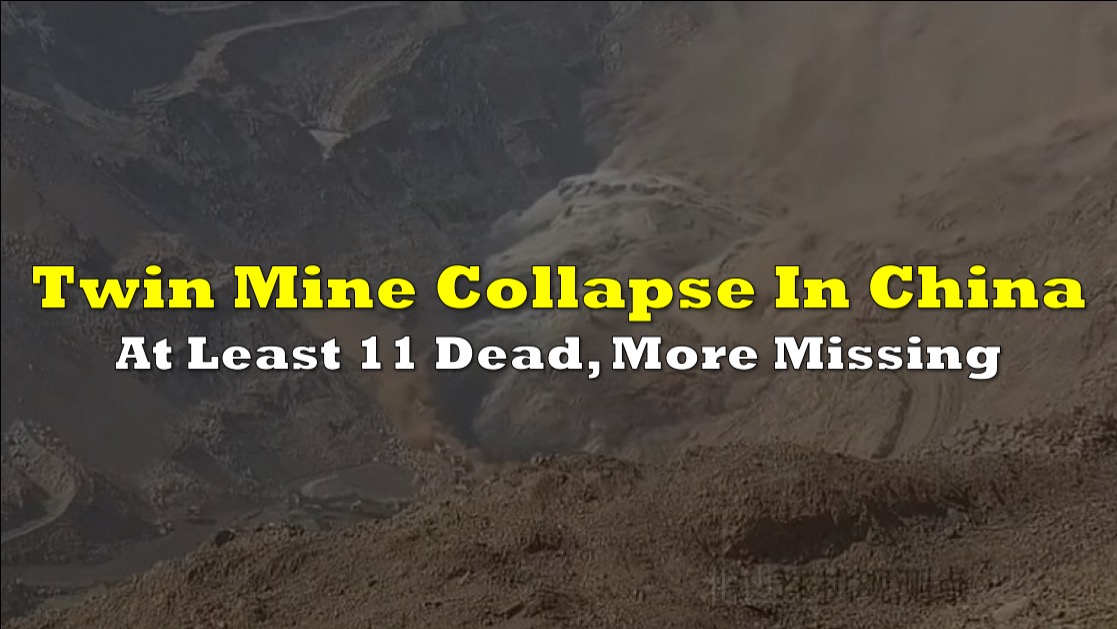An open pit coal mine in China’s northern Inner Mongolia region collapsed on Wednesday, killing at least six people and leaving nearly 50 more missing. This was followed by another disaster in southwestern China on Sunday where a roof collapsed at a mine killing at least five workers.
According to state media, the Inner Mongolia landslide occurred about 6:00 p.m. Wednesday, roughly five hours after one of the pit’s walls caved in, burying miners and mining trucks below. Some 900 rescuers equipped with heavy equipment were on the scene and work had restarted by Thursday morning.
The mine’s operator, Inner Mongolia Xinjing Coal Industrial Co., was warned and punished last year for a variety of safety infractions ranging from unsecured access routes to the mining surface to dangerous volatile material storage and a lack of training for its safety overseers.
Additional 🎥 footage of the Tue, 22 Feb ~1300hrs Xinjing Coal Industry Co. #新井煤业有限公司 coal mine collapse #煤矿坍塌 in China's open-pit mine in Inner Mongolia's #内蒙古 Alxa League #阿拉善盟 Left Banner #左旗. h/t @tzcsxgx pic.twitter.com/rYiPaTYFBT
— Wes Andrews (@Wes_Andrews) February 27, 2023
Inner Mongolia is a significant territory for coal, mineral, and rare earth mining, which opponents argue has ruined the native landscape of mountains, green steppes, and deserts.
China relies heavily on coal for power generation, but it has attempted to limit the incidence of fatal mine accidents by emphasizing safety and closing smaller businesses that lacked sufficient equipment.
The tragic mine accident prompted widespread safety checks, raising fears that the country’s core fuel supply could be disrupted just as demand is recovering.
According to a statement issued Friday evening by China’s Ministry of Emergency Management, 20 teams have been despatched across the country to undertake inspections in order to prevent repeat disasters. Rescue attempts in Inner Mongolia have been impeded by a landslide that occurred after the first mine collapse.
Chinese President Xi Jinping demanded “all-out efforts in search and rescue of the missing and treatment of the injured,” state media reported.
The majority of mining-related fatalities are attributable to explosions produced by methane and coal dust buildup, or drownings occurred when miners break into abandoned pits due to flooding.
In recent months, China has seen a rash of fatal industrial and construction accidents as a result of insufficient safety training and regulation, official corruption, and a proclivity for profiteering by firms. The economy has stalled, in part because of the now-abandoned “zero COVID” policy’s severe lockdowns and quarantines.
Meanwhile, on a separate accident, 25 miners were underground when a section of the roof fell on Sunday morning in Sichuan province. According to the provincial Department of Emergency Management, five people were killed, three were seriously injured, and the rest escaped. According to reports, the mine did not produce coal, but no further information was provided.
❗️China Mine Collapse: Another Deadly Incident Kills Five in Sichuan
— ᖇᗝᗝᔕᗴᐯᗴᒪ丅 丅ᗴᖇᖇᎥᗴᖇᔕ (@RTerriers) February 27, 2023
A non-coal mine has collapsed in Nanjiang County, Bazhong City. 25 people reportedly went into the mine, and only 17 have returned – with a rescue mission underway.
/ pic.twitter.com/PSTVU8vFCU
In 2022, around 600 people were killed in mining accidents in China. The latest could be the worst in years, and it has come at a critical juncture in the political calendar, with the annual National People’s Congress slated to convene in the capital on March 5.
In recent years, the government has placed a greater emphasis on the implementation of safety laws, forcing some smaller mines to close due to a lack of sufficient safety equipment. According to government records, there were 356 mining accidents in 2021, down from 434 in 2020.
Information for this briefing was found via CTV News, ABC News, Bloomberg, The Guardian, and the sources mentioned. The author has no securities or affiliations related to this organization. Not a recommendation to buy or sell. Always do additional research and consult a professional before purchasing a security. The author holds no licenses.









